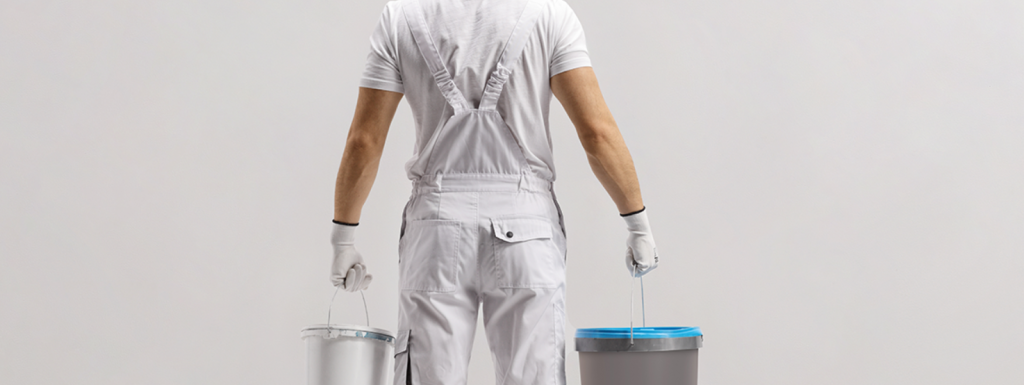
The Difference Between Interior and Exterior Painting Services
When it comes to painting your home, understanding the distinct differences between interior and exterior painting services is crucial. Both tasks require unique skills, materials, and considerations to ensure a high-quality and long-lasting finish. In this blog, we’ll explore the key differences between interior and exterior painting, helping you make informed decisions for your next painting project.
1. Purpose and Environment
Interior Painting:
Purpose: Interior painting focuses on enhancing the aesthetic appeal of a home’s interior spaces. It involves creating a visually pleasing environment that reflects the homeowner’s style and preferences.
Environment: Interior painting is conducted within controlled environments. This means painters can work without worrying about weather conditions, but they must consider factors such as ventilation and the potential for paint fumes.
Exterior Painting:
Purpose: Exterior painting aims to protect and beautify a home’s exterior surfaces. It involves adding a layer of defense against weather elements while improving curb appeal.
Environment: Exterior painting is subject to various weather conditions. Painters must account for temperature fluctuations, humidity, and precipitation, all of which can impact the painting process and the longevity of the paint job.
2. Types of Paint
Interior Paint:
Formulation: Interior paints are formulated to withstand cleaning and scrubbing. They are designed to be low-odor and emit fewer volatile organic compounds (VOCs) to ensure indoor air quality.
Finish Options: Common finishes for interior paint include matte, eggshell, satin, semi-gloss, and gloss. Each finish serves different aesthetic and functional purposes, from hiding imperfections to providing a washable surface.
Exterior Paint:
Formulation: Exterior paints are made to endure harsh weather conditions, including UV radiation, rain, snow, and temperature extremes. They contain additives that resist fading, cracking, and mildew growth.
Finish Options: Exterior paints typically come in flat, satin, and gloss finishes. These finishes are chosen based on the surface being painted and the desired level of protection and sheen.
3. Preparation and Techniques
Interior Painting:
Preparation: Preparation involves protecting furniture and flooring, repairing holes and cracks, sanding surfaces, and applying primer. Proper preparation ensures a smooth and even finish.
Techniques: Interior painting techniques include cutting in, rolling, and sometimes using brushes for detailed work. Attention to detail is crucial for achieving clean lines and consistent coverage.
Exterior Painting:
Preparation: Exterior preparation is more extensive. It includes power washing surfaces to remove dirt and debris, scraping off loose paint, sanding rough areas, and applying primer to bare wood or metal.
Techniques: Exterior painting often involves the use of sprayers, rollers, and brushes. Techniques must accommodate various surface textures, from wood siding to stucco, and ensure thorough coverage and protection.
4. Durability and Maintenance
Interior Paint:
Durability: While interior paints are durable, they are generally not exposed to the same level of wear and tear as exterior paints. They are designed to withstand cleaning and everyday use within a controlled environment.
Maintenance: Interior surfaces may require touch-ups over time, especially in high-traffic areas. Regular cleaning can help maintain the appearance of interior paint.
Exterior Paint:
Durability: Exterior paints are formulated for maximum durability to withstand the elements. They provide a protective barrier against moisture, UV rays, and temperature changes.
Maintenance: Exterior surfaces require periodic maintenance to preserve their appearance and protective qualities. This may include washing, inspecting for damage, and performing touch-ups as needed.
5. Cost Considerations
Interior Painting:
Cost Factors: Costs for interior painting projects can vary based on the size of the rooms, the complexity of the job, and the type of paint and finishes chosen. Interior painting is generally less expensive than exterior painting.
Value: Investing in quality interior paint can enhance the beauty and value of your home, making it a worthwhile investment.
Exterior Painting:
Cost Factors: Exterior painting tends to be more expensive due to the additional preparation work, the need for specialized equipment, and the use of durable, weather-resistant paints.
Value: A well-executed exterior paint job can significantly improve your home’s curb appeal and protect your investment from the elements.
Both interior and exterior painting services play essential roles in maintaining and enhancing your home. Understanding the differences between the two can help you make informed decisions, whether you’re looking to refresh your living space or protect your home’s exterior. By choosing the right professionals and products for each job, you can ensure beautiful, long-lasting results that meet your needs and exceed your expectations.